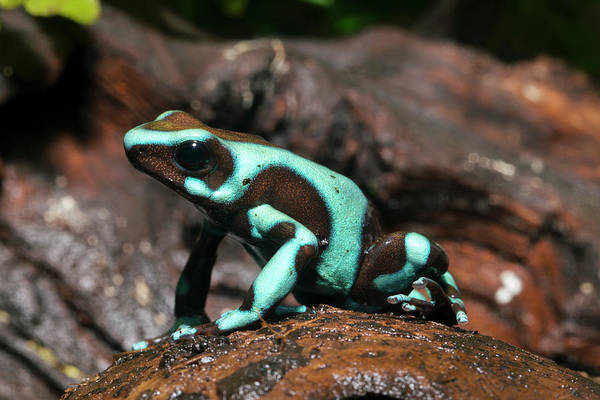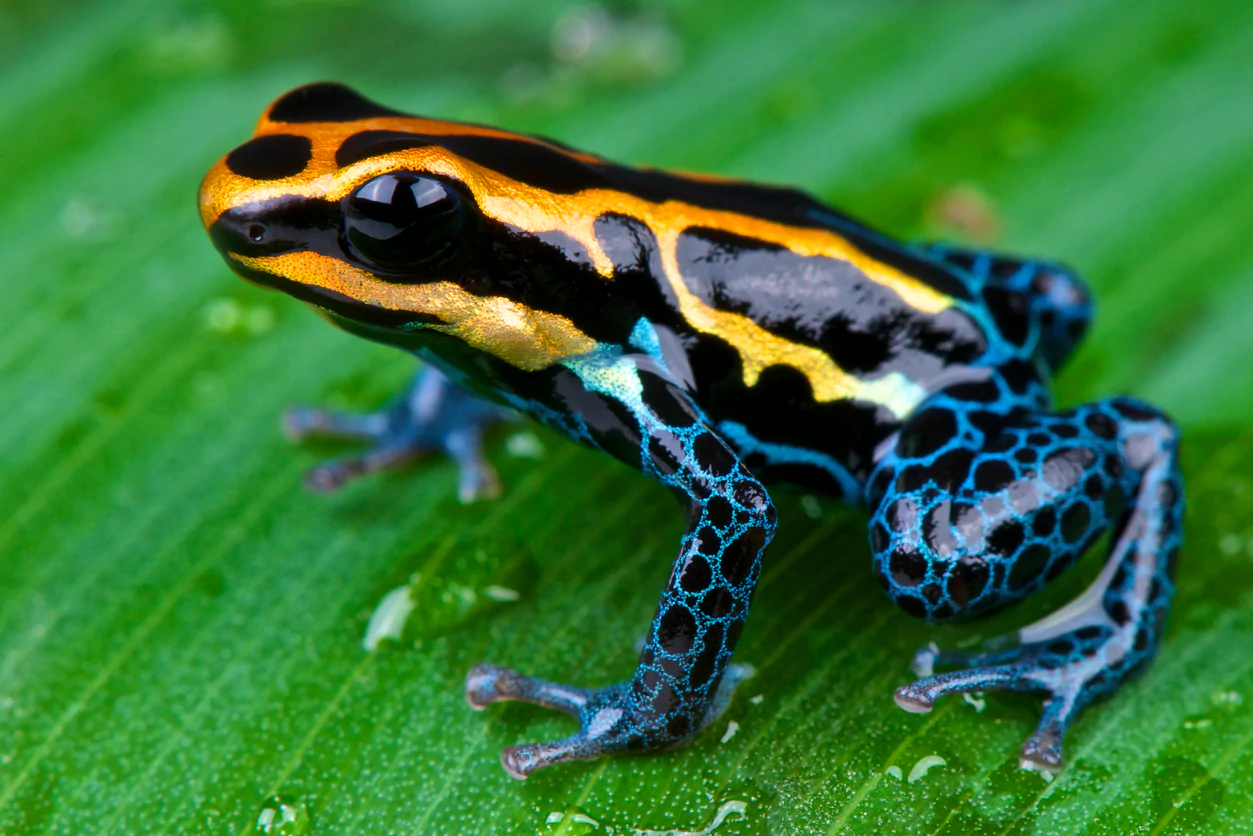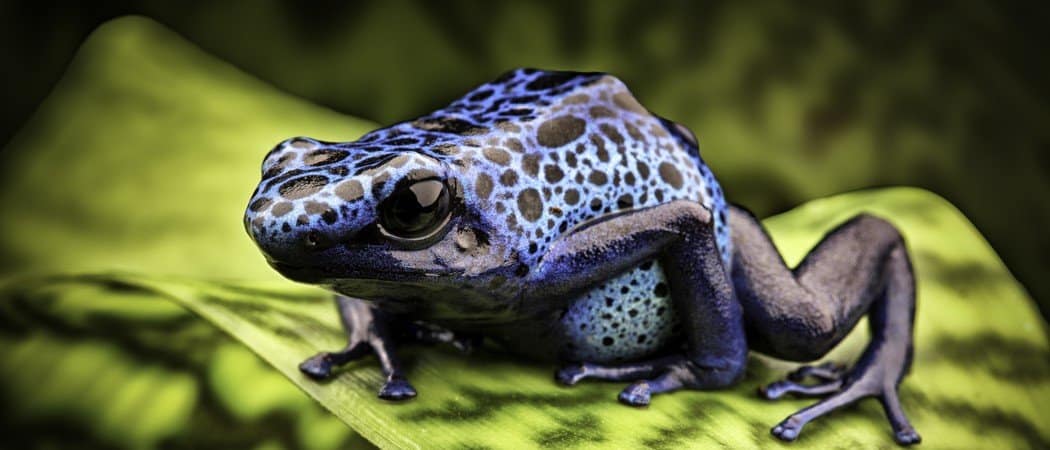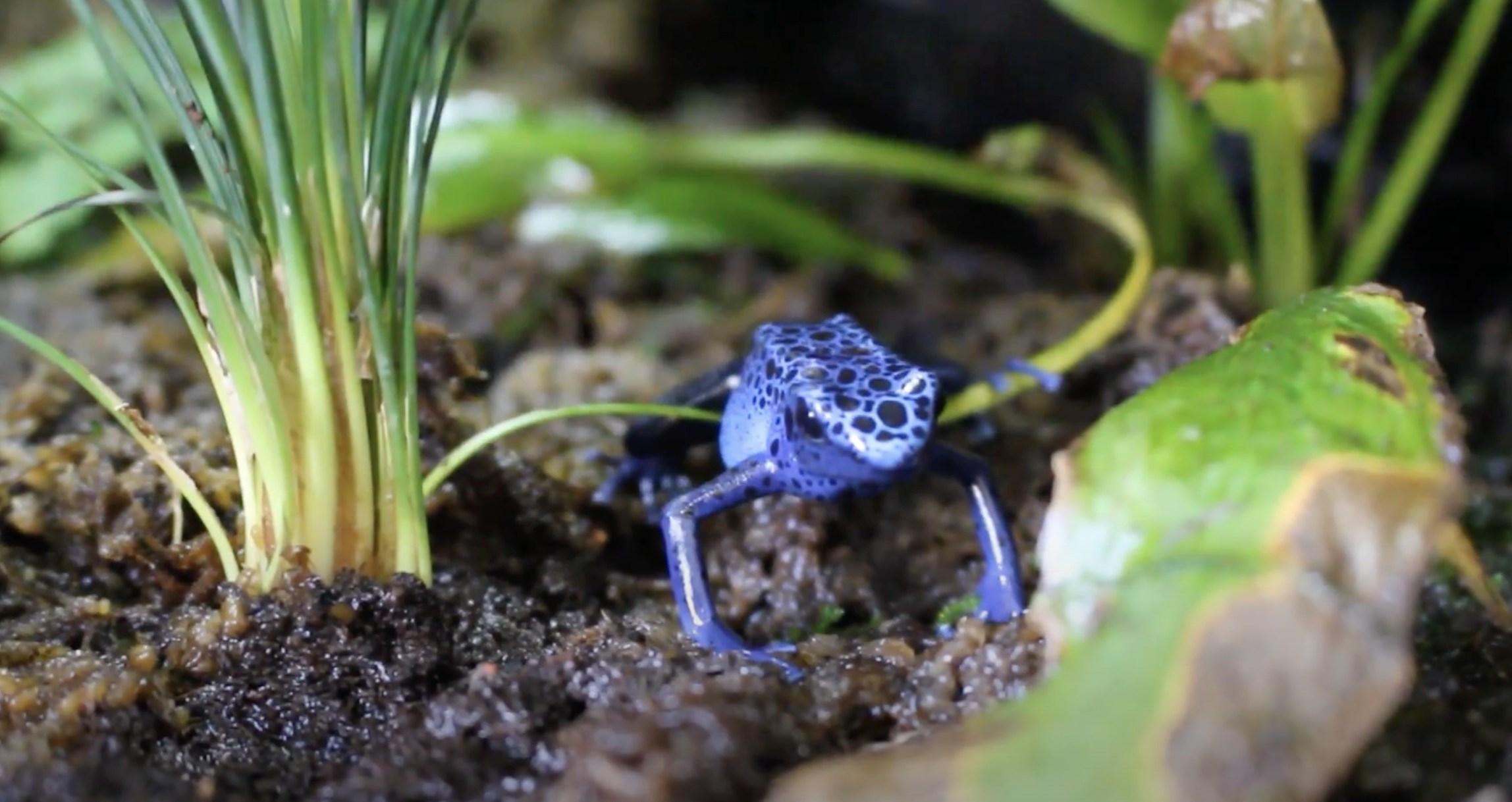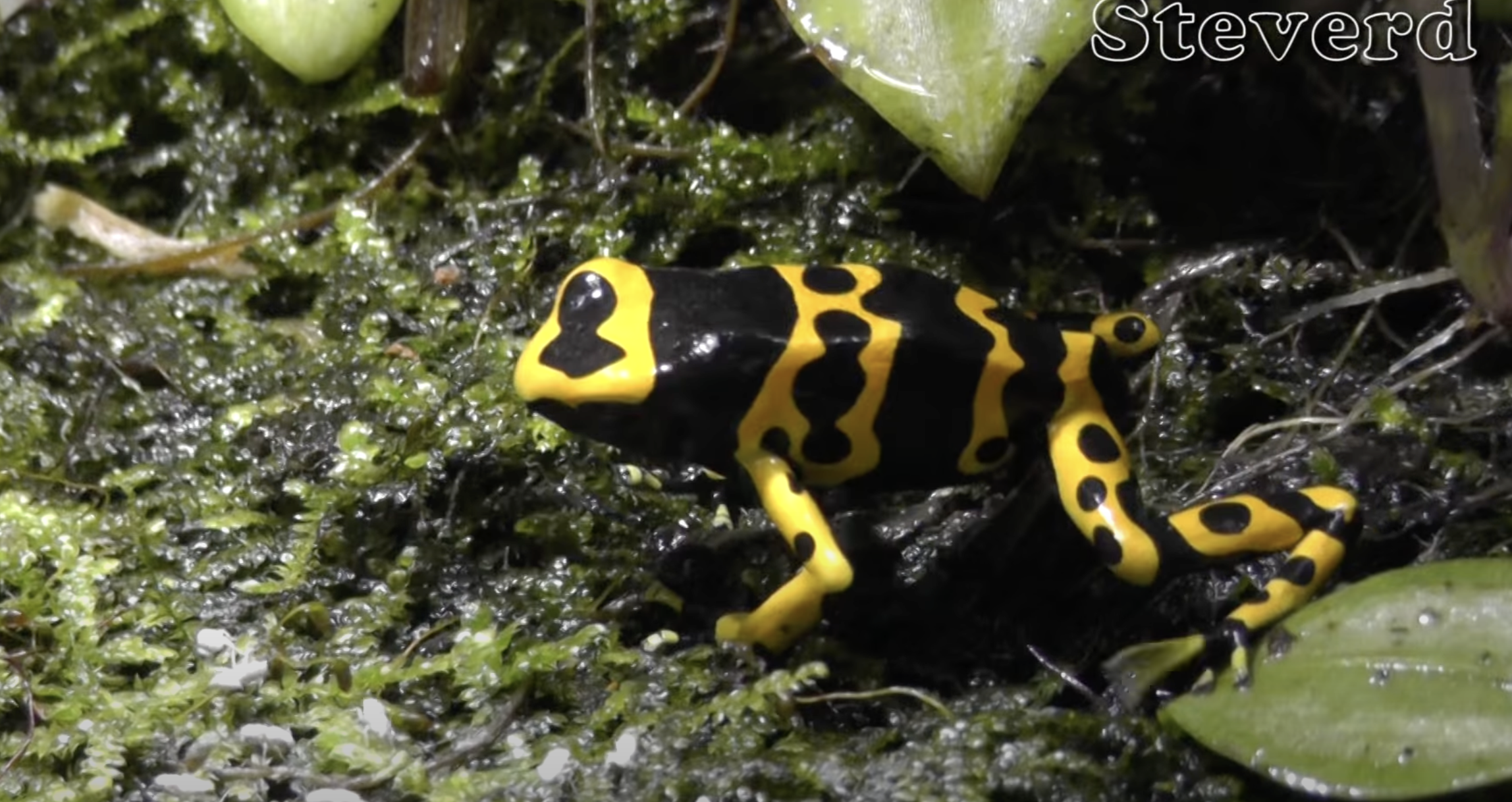Poison Dart Frog
Poison Dart Frog
Diet: Termites, Centipedes, and ants in the wild, fruit flies and crickets in captivity.
Weight: 2 grams
Size: 0.5- 2.5 inches
Life Span: 1-3 years in the wild and up to 10 years in captivity
There are more than 100 different species of poison dart frogs. They are all brightly colored to warn predators away, letting them know that they are poisonous. Some species demonstrate bright colors with high toxicity while other species exhibit more cryptic coloration that will have minimal to no amount of toxicity.
Poison dart frogs lay their eggs in most places. Once the eggs hatch the frogs carry their tadpoles to water. Poisonous frogs are the only ones in their species that care for their young
As their name indicate, the secretions of certain species of poison dart frogs are very toxic. A single frog of the species Phyllobates terribilis has enough toxins to kill 10-20 adults. One of the extracts from their secretions, known as “curare” or “d-tambourine”, was used from 1930’s – 1980’s as an anesthetic. Helping to relax patients before surgery. Derivatives of this drug are still used today to provide surgical muscle relaxation under general anesthesia. Other compounds from poison dart frog secretions, are currently under clinical investigation as a potent pain killer
You are what you eat. Dart frogs gain their poison form the bugs they in the wild. In captivity, they eat crickets and fruit flies which carry no toxins. Consequently, the dart frogs in this exhibit are not actually poisonous.
